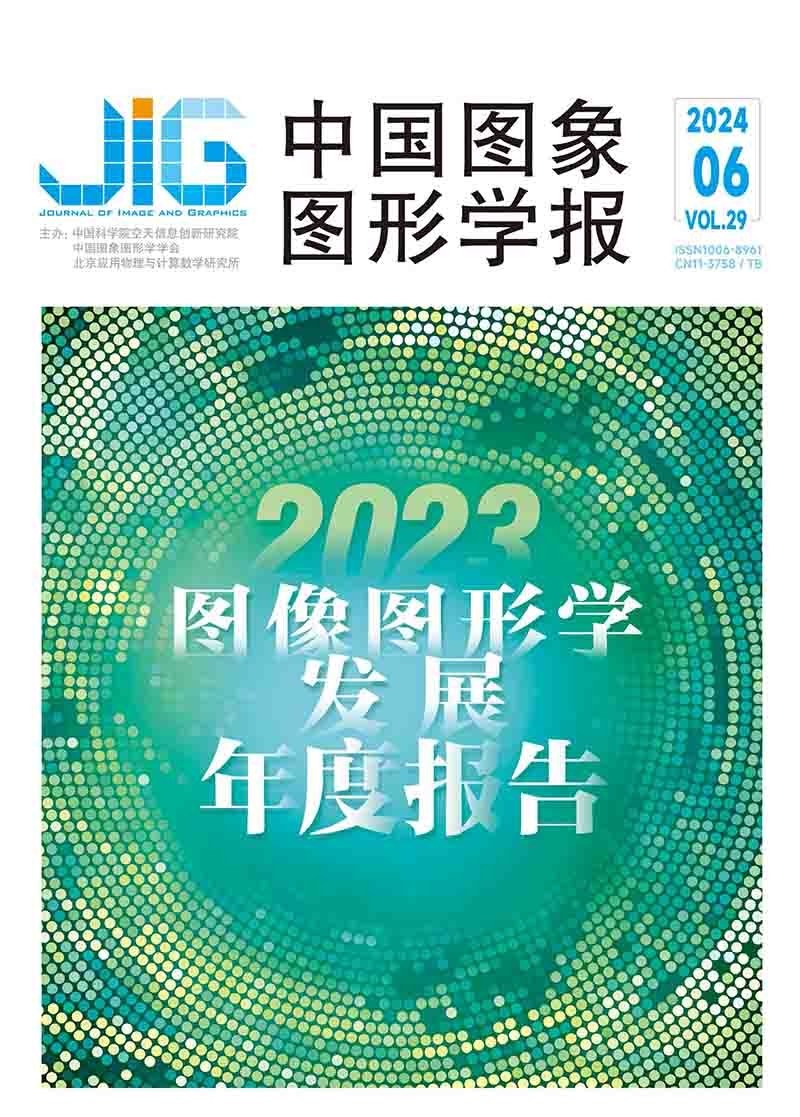
高质量超声成像与重建研究综述
李云舒1, 马宸1, 黄丽红1, 高雪1, 闫鑫2, 汪源源1, 郭翌1(1.复旦大学信息科学与工程学院生物医学工程中心, 上海 200433;2.沈阳工业大学信息科学与工程学院, 沈阳 110870) 摘 要
医学超声作为一种无创、无辐射和实时医学成像模态,在重大疾病早期诊断和精准诊疗领域发挥重要作用。影像分辨率是超声仪器的核心指标,也是影响临床精准诊疗的关键。近年来,超声成像设备呈现多样化的发展趋势,以满足不同的临床应用场景,如超快速成像设备、便携成像设备等。然而,这些超声设备通常以牺牲成像质量来实现特定应用场景的要求,影响了其临床可用性。因此,为提升医学超声设备的诊断能力,研究如何获得高质量超声图像至关重要。本文回顾了近年来高质量超声图像成像的相关工作,从波束形成算法和高质量超声重建算法两方面进行介绍,波束形成算法方面,介绍了以延时叠加方法为代表的传统的非自适应方法,以及 4 类成像效果更优越但计算复杂度更高的自适应的波束形成方法,并对波束形成的深度学习类方法进行了简要介绍。对于高质量超声重建算法的讨论,则是从传统方法和深度学习方法两方面展开,并重点介绍了在高质量超声重建算法方面具有更广阔应用前景的深度学习技术,包括卷积神经网络方法、生成对抗网络方法等。最后,本文从研究方法的侧重点等方面比较国内外研究进展,并讨论了未来发展趋势。
关键词
Review of high-quality ultrasound imaging and reconstruction
Li Yunshu1, Ma Chen1, Huang Lihong1, Gao Xue1, Yan Xin2, Wang Yuanyuan1, Guo Yi1(1.Center for Biomedical Engineering, School of Information Science and Technology, Fudan University, Shanghai 200433, China;2.School of Information Science and Engineering, Shenyang University of Technology, Shenyang 110870, China) Abstract
Medical ultrasound,as a noninvasive,radiation-free,real-time medical imaging modality,plays a crucial role in the early and clinical diagnoses and treatment. Image resolution stands as a core indicator of ultrasound instruments, which significantly influences precise diagnosis. In recent years,ultrasound imaging devices have undergone a diversified development to meet various clinical application scenarios,including ultra-fast and hand-held imaging devices. However, most advancement comes at the expense of reducing imaging quality to achieve high imaging frame rate or portable hardware system,which impacts their clinical applicability. Thus,obtaining high-quality ultrasound images is a pivotal issue. This study reviews extensive recent work on the high-quality ultrasound imaging by delving into beamforming algorithms and high-quality ultrasound reconstruction methods. In the aspect of beamforming algorithms,we introduce traditional nonadaptive methods represented by Delay and Sum techniques,as well as four types of adaptive beamforming methods with superior imaging quality but higher computational complexity. In addition,a brief introduction to learning-based models for beamforming is provided. Adaptive beamforming algorithms are currently a major research topic with the advantages of high imaging quality and the substantial development prospects. The study focuses on four main kinds of adaptive algorithms: minimum variance(MV)methods,coherence factor(CF)methods,short-lag spatial coherence(SLSC)methods,and filtered delay multiply and sum(F-DMAS)methods. Detailed analyses of modified algorithms based on the classic adaptive algorithms and corresponding applications are presented. For each type of adaptive algorithm,a brief theoretical introduction is provided. Subsequently,the study lists the most influential related literature in recent years,along with a short summary to the methodology and final results. The primary challenge for MV-based methods is improving the accuracy of covariance matrix estimation and reducing computational complexity. To address this problem,the study introduces several approaches,such as reducing beamforming dimensionality,designing covariance matrix based on Toeplitz structure,and learning adaptive weights using neural networks. For CF-based methods,improved coherence factor methods and other related methods are introduced. Compared with the traditional CF-based methods,the former can greatly improve the lateral resolution and signal-to-noise ratio of images,while the latter can suppress the dark region artifacts and alleviate the excessive suppression of coherence factor. For SLSC-based methods,techniques like adaptive synthesis of dual pore diameter,robust principal component analysis,and linear attenuation weighting are explored to address the issue of poor resolution. For F-DMAS-based methods,approaches to further enhance imaging quality and decrease computational cost are discussed. For instance,combining multi-line acquisition with the lower-complexity F-DMAS algorithm increases the frame rates while maintaining the high quality of images. F-DMAS can also be combined with a pixel-based beamformer to improve the contrast of the generated images and suppress the clutter. Finally,the study provides an analysis of the advantages and disadvantages of each method in terms of resolution,contrast,noise suppression,and robustness. For highquality ultrasound reconstruction algorithms,the discussion primarily focuses on two aspects:conventional and deep learning-based methods. Conventional methods,including interpolation,sparse representation-based methods,and example-based methods,aim to enhance the spatiotemporal resolution and reduce noise of images. By contrast,deep learning methods,which are capable of fully utilizing prior knowledge to automatically learn gray distribution mapping between images from different domains(centers),present broader application prospects in high-quality ultrasound reconstruction algorithms. For convolutional neural network(CNN)-based methods,the study enumerates several approaches,such as learning the nonlinear mapping between low-quality image subspaces reconstructed from a single plane wave and highquality image subspaces reconstructed from synthetic aperture measurements through CNN. This approach can accurately preserve complete speckle patterns while improving lateral resolution. The image reconstruction method based on a twostage CNN can produce high-quality images from ultra-fast ultrasound imaging while ensuring high frame rates. Regarding generative adversarial network (GAN)-based methods,the study introduces several improved algorithms that achieve higher-quality acquisition of images,stronger robustness of algorithms,and higher image frame coherence to better satisfy the specific demand for clinical applications. Finally,the study conducts an overall comparative analysis of research progress at home and abroad and discusses future development trends. Concerning beamforming algorithms,domestic and foreign scholars focus on adaptive beamforming methods. Moreover,the future development and research trends of beamforming algorithms can be primarily summarized as follows:1)reducing the computational complexity of adaptive beamforming methods to improve their real-time performance;2)deepening research on learning-based beamforming algorithms;3)synchronously increasing the imaging frame rate and image quality in ultrafast ultrasound imaging;and 4)integrating different beamforming methods to fully leverage the advantages of various approaches. In terms of high-quality ultrasound image reconstruction,studies predominantly focus on deep learning technology. Relatively few studies are available on using traditional methods for super-resolution reconstruction. The research on deep learning methods has shifted from CNNs to GANs or their fusion. Finally,future prospects for high-quality ultrasound image reconstruction are proposed:1)combining traditional methods with deep learning techniques,and 2)introducing diffusion models and foundation models into the field of high-resolution ultrasound image reconstruction to further enhance the quality of generated images. The synergy of traditional and deep learning-based methods,coupled with the introduction of innovative and advanced technology,holds great promise for propelling high-resolution ultrasound image reconstruction into new frontiers and contributes significantly to the advancement of healthcare services.
Keywords
|



 中国图象图形学报 │ 京ICP备05080539号-4 │ 本系统由
中国图象图形学报 │ 京ICP备05080539号-4 │ 本系统由